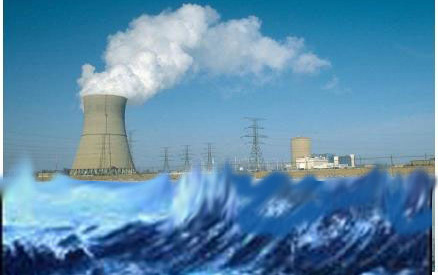Dr. John Church on how global warming will raise sea levels and bring more frequent storms
Listen Now Download the show by right-clicking the link.
Dr. John Church
Dr. Caldicott starts the conversation by mentioning a recent report about increased ice melting. Read the July 12 article Rate of Arctic Sea Ice Melt Heats Up. She asks Church to explain the albedo effect. He describes the phenomenon in relation to the Arctic ice, and how it increases global warming. Read the 2005 article Global Warming ‘Past the Point of No Return’, which covers the albedo effect. Dr. Caldicott says she read that mountains are being painted in Argentina to reflect sunlight. Read Inventor paints the Andes to combat global warming. Church recounts the historical progression of global warming from the Ice Age to the present, how human populations migrated because of ice-melt, and talks about concentrations of CO2 before the Industrial Revolution started to increase emissions. He explains how solar radiation heats the Earth to cause the current changes in climate, how oceans take up and release carbon dioxide, and how burning fossil fuels and clearing forests are causing global warming. Church describes why methane is another potent greenhouse gas, after Dr. Caldicott expresses her concern about the methane being released from melting Arctic ice and permafrost. Church articulates the three major reasons for sea level rise in the 20th Century, including the significance of the Greenland ice sheet, and how much the Intergovernmental Panel on Climate Change (IPCC) has predicted seas to rise by 2100. He says the worst-case scenario is higher than the IPCC range. He says oceans will continue to rise even if greenhouse gas levels are stabilized.

How a sea level rise of 6 meters (about 19.8 feet) would affect the Northeast USA (Weiss & Overpeck, Univ. of Arizona)
Dr. Caldicott turns to storms and extreme weather events: how they will increase sea levels, and which populations will be most affected. Church emphasizes that we are mainly a coastal society today. Coastal flooding is one of the problems expected to increase because of global warming-induced weather events, Church says. He also notes that storms will come more frequently, and ordinary storms will be more dangerous because of rising oceans. Dr. Caldicott mentions the issue of wells being polluted with sea water, an issue raised in the Stern Review. Church covers some of the preventive measures nations can take to protect their coastline from sea-level rise. Dr. Caldicott talks about the problem of environmental refugees, and how politicians are not anticipating this crisis. Church concurs, citing the deaths and displacement caused by Cyclone Nargis and Hurricane Katrina. He says urgent action is necessary to prevent the most catastrophic effects of global warming. They both agree on the need for scientists to teach politicians about the full reality of climate change.
For more on sea-level rise, read the articles Melting Icebergs in Polar Oceans Causing Sea Level Rise Globally, New Assessment Finds,
Sea-Level Rise Will Be Worse for Some, We Just Don’t Know Who, Greenland Ice Sheet Melting Faster Than Expected; Larger Contributor To Sea-Level Rise Than Thought and Sea level rise could bust IPCC estimate. See the report Improved estimates of upper-ocean warming and multi-decadal sea-level rise. Check out the 2009 report focused on California, A Report on Sea Level Rise Preparedness. Look for the new report, Understanding Sea-level Rise and Variability, in September. Visit the Greenpeace and Greenpeace USA Web pages about sea level rise. Also check out the Climate Institute page on oceans & sea-level rise. Look at information about the documentary film and book, ‘The Sinking of Tuvalu’. For a look at the potential effects of increased storms, see the report Weather and Climate Extremes in a Changing Climate – North America, Hawaii, Caribbean and U.S. Pacific Islands. For more on the state of the oceans, read the July 29 article Are Our Oceans Dying? Phytoplankton has Declined Terrifying 40% in 60 Years and Carbon Emissions Creating Acidic Oceans Not Seen Since Dinosaurs.
